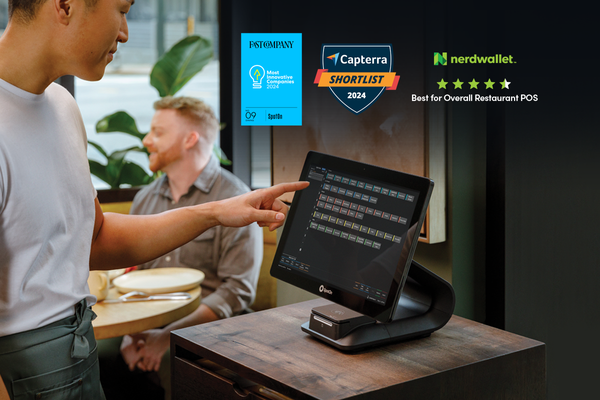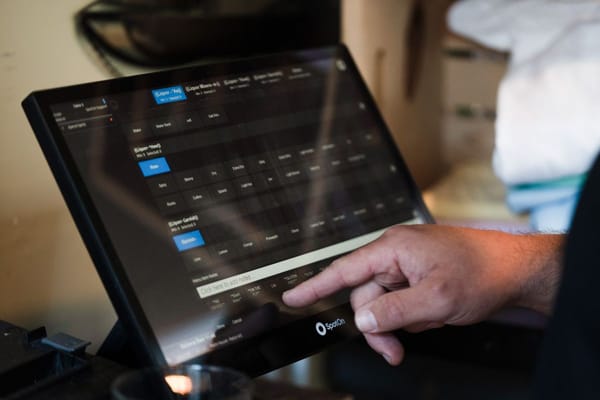Imagine a scenario where you never run out of merchandise customers want, where stock availability can be updated easily or even automatically, and you can predict the number of employees you'll need at any given time and profile ideal customers.
It might sound too good to be true, but with today's ecommerce solutions, you can operate with this level of efficiency—even if you're selling online and in-store. When you learn how to streamline ordering processes and other tasks with the help of technology, you save both time and money, gaining insights that boost your bottom line.
Streamline stock tracking and reordering.
In the same way that smartphones aren't just for making phone calls, modern retail point-of-sale (POS) technology does a lot more than take customer payments. Today's retailers can take advantage of integrated inventory tools to do the following:
- Update product catalogs. The best POS systems are built around an omnichannel experience. They offer the ability to build a single product catalog for multiple sales channels, so you won't have to maintain in-store and online catalogs separately.
- Sync sales and stock. Having a single POS system that reflects both in-store and online sales makes the product availability in your catalog more accurate. It's a good idea to choose the kind of tech solution that can set up your ecommerce store and online shopping cart so that everything links up. As Statista confirms, online shopping has become a major sales channel with almost 9 in 10 adults in the U.S. buying digitally. To cater to this growing market, it's vital that all sales and their corresponding impact on inventory levels can be tracked from one central place.
- Automate product ordering. Another useful feature of smart POS systems is that you'll be alerted when stocks fall below a preset level. You can reorder and update stock quantities when purchase orders arrive in just a few clicks.
By reducing manual input, modern ecommerce solutions make inventory management faster and more reliable. You're less likely to lose sales or damage your brand through stock-outs. Theft or shrinkage can be uncovered and addressed sooner, too—as the 2020 National Retail Security Survey reports, retail shrink is expensive, costing the sector almost $62 billion in that year alone.
Make manual timekeeping a thing of the past.
Employee management is another area where modern POS tools can make a difference. Just set up secure PINs or employee profiles, and they can clock in and out of their shifts without the need for a separate timekeeping system.
According to Robert Half International, employers lose approximately 4.5 hours a week per employee due to time theft. Costs quickly add up, but digitizing timekeeping can minimize time fraud by deterring early finishes, late starts, unauthorized overtime, and extended breaks. Given that employee time records are collected in one place, payroll calculations and reporting are also simplified.
Gain store insights from reporting and analytics.
Apart from process efficiencies, multi-channel POS systems offer powerful reporting capabilities, as well. Many solutions are cloud-based, meaning you can track your in-store and online performance from just about anywhere. Here are examples of reports you can run:
- Sales reports. These provide a snapshot of sales information by day, employee, location, sales channel, product, and returned items. You can find out which products are selling, how promotions are affecting sales, and if there are issues with individual products or sales channels. When you compare reports over time, it could help you anticipate product demand and determine staffing levels in stores so that customers are never left waiting.
- Stock reports. With reports on stock, you can view stock levels in order to make informed purchasing decisions. Find out how much capital you have in your inventory and budget for next season, check reports for items that are running low, and monitor stock performance so you can reorder popular items or hold promotions for slow-moving stock.
- Customer reports. Looking for insights on customers' buying preferences and patterns? Customer reports facilitate targeted marketing strategies like loyalty programs and events that can boost sales.
- Employee reports. These reports reveal your best-performing employees so you can show them appreciation and improve retention. You could also schedule them for the busiest times at your store to maximize sales. Additional training could be offered for those whose performance can use improvement or who are regularly making mistakes.
Doing more with a one-stop-shop solution.
In the current COVID-19 landscape, where customer expectations have gone up and both labor and supply costs are rising, knowing how to streamline ordering processes and other parts of your retail business puts you one step ahead. Modern POS systems capture a wide range of data so you can improve the performance of multiple areas through a single platform.









